An Overview of Kosovo’s Trade
Kosovo’s negative trade balance is deepening despite recent increases in exports. Where is this sudden increase in trade volume, and especially imports coming from?
An overview of trade data collected from the Comext data portal managed by the European Comission that houses detailed trade data for Western Balkan countries shows rather unusual recent developments in terms of trade volume, trade partners and types of products traded.
Between the years 2010 and 2021, imports rose gradually as well as exports, which did so at a slower pace. However, in 2021 the negative trade balance deepened quickly and considerably, reaching €-4 billion in 2021, with exports standing at €593 million and imports at €4.6 billion.
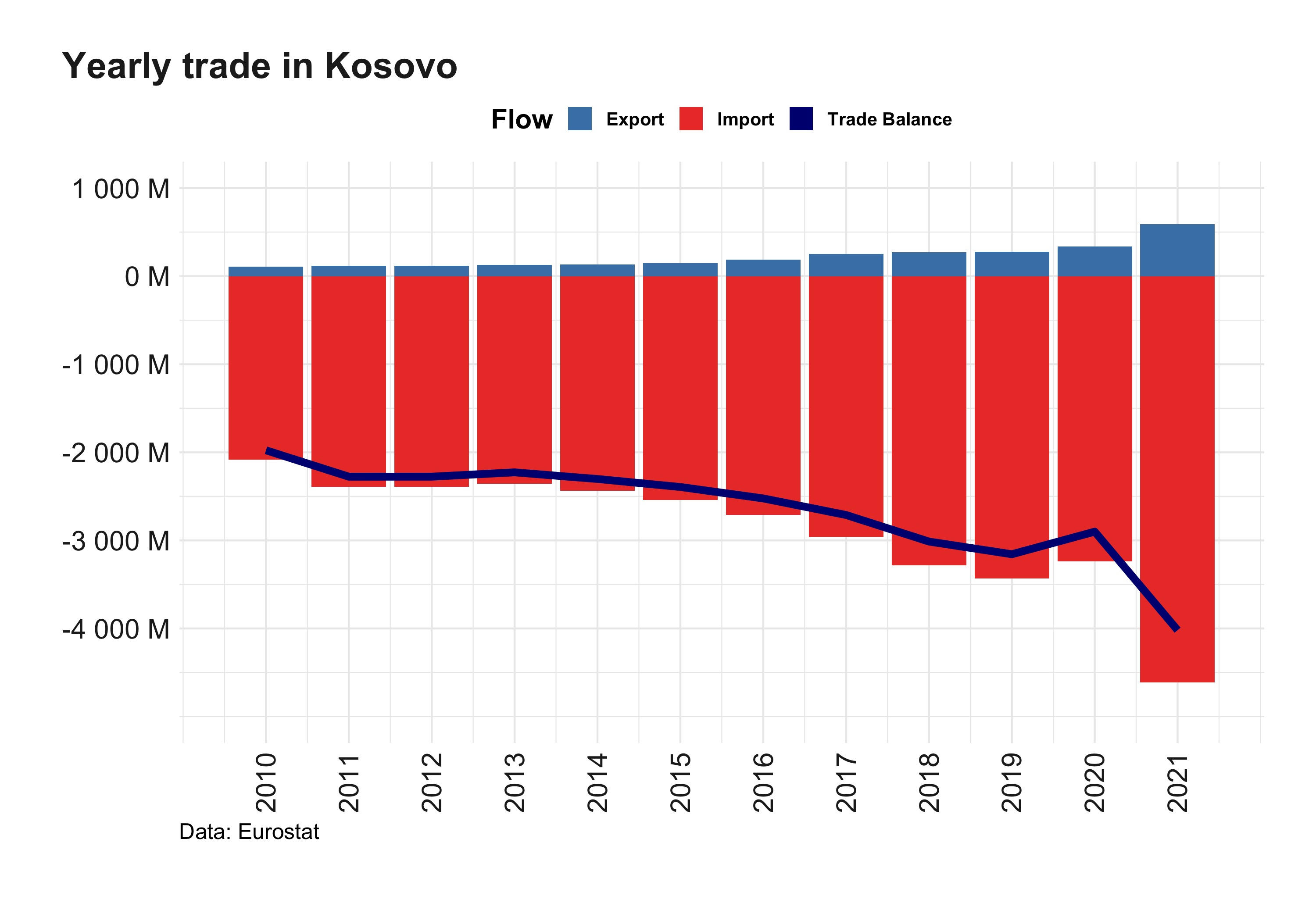
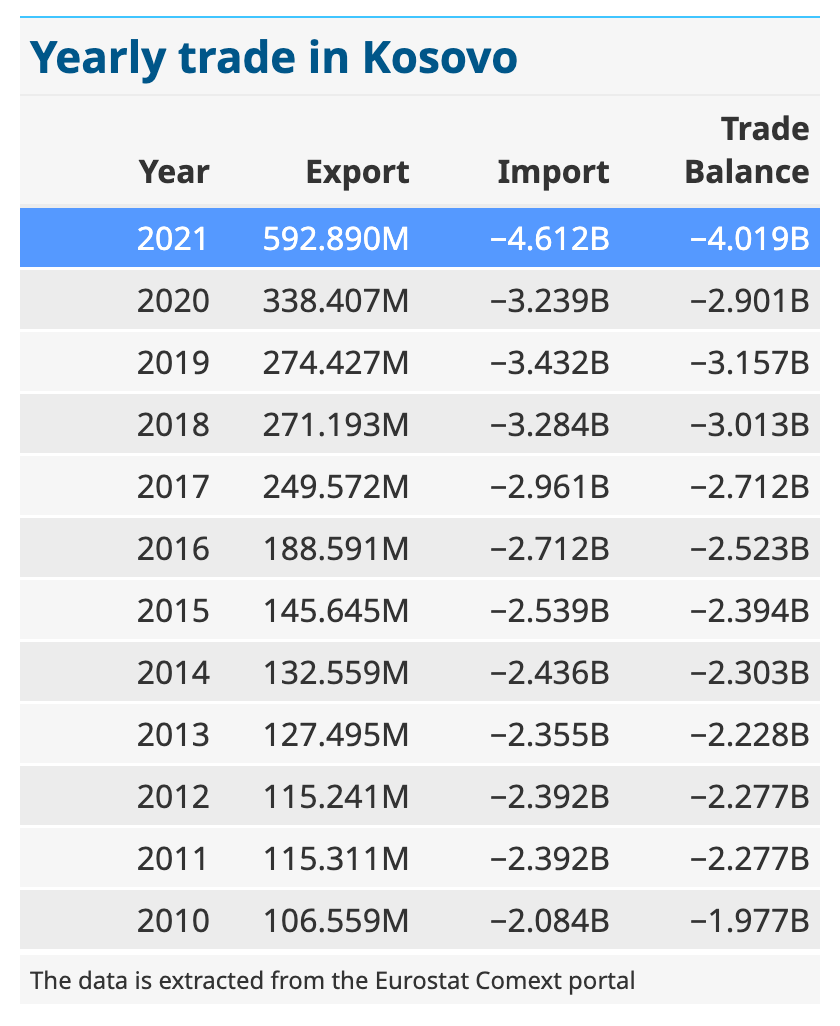
In 2021, Kosovo’s main trading partners were the United States when it comes to exports, and Germany when it comes to imports, standing at €123 million and €607 million, respectively.

When looking at the different kinds of goods traded in 2021, we see that Kosovo’s main exports were miscellaneous manufactured articles, base metals and articles thereof, and plastics and articles thereof. On the other hand, Kosovo’s main imports comprise of mineral products, machinery and electrical equipment, and prepared foodstuffs and beverages.
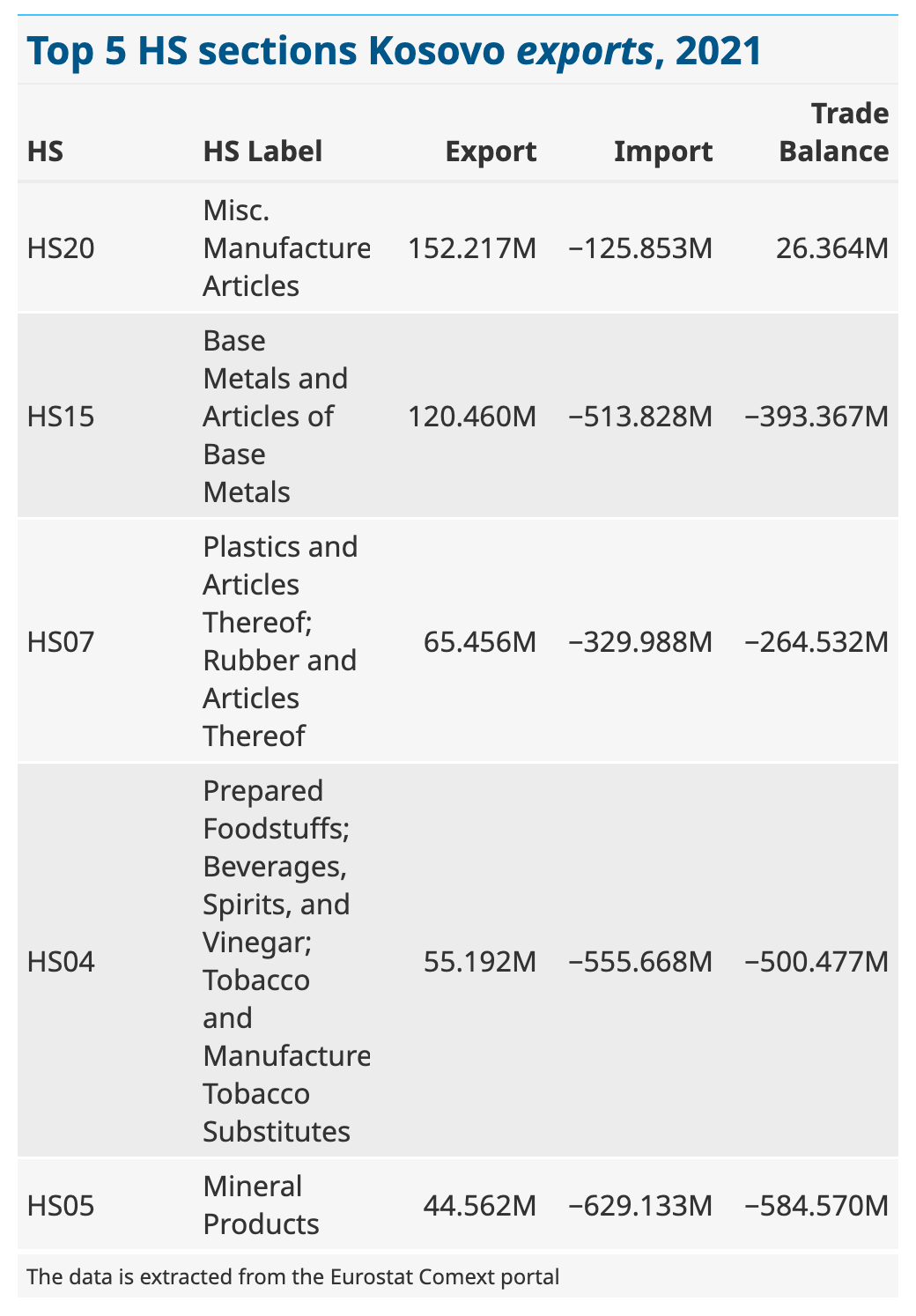
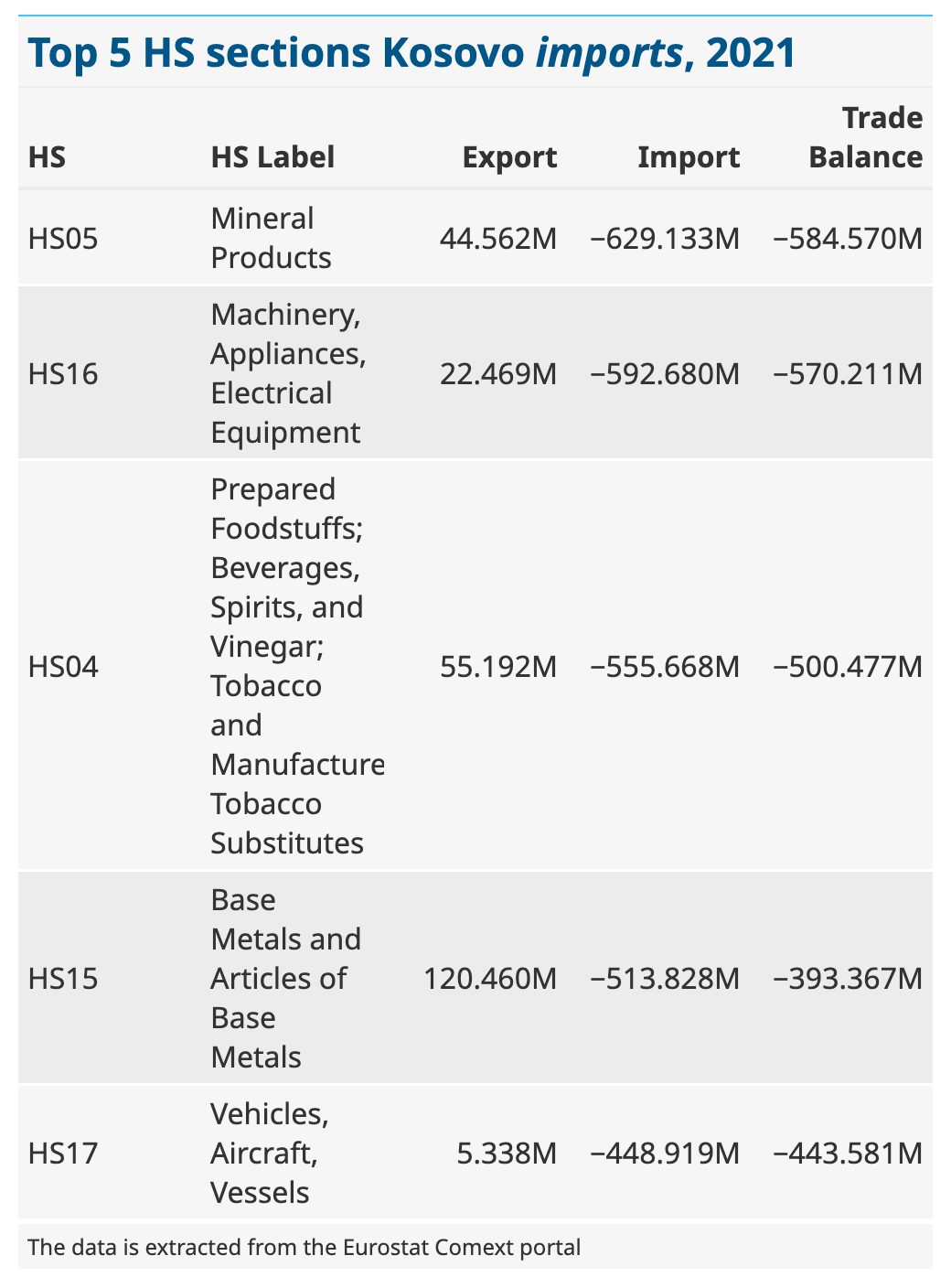
Nevertheless, absolute trade volume does not necessarily explain where the unusual increases in both exports and imports come from. A quick look at the biggest differences in the value of goods traded between 2019 and 2021 illuminates the problem partially.
When it comes to exports, we see that 2021 displayed a hefty increase of €134 million in miscellaneous manufactured articles (HS20 according to international tariff codes), specifically wooden furniture and sanitary products (not shown here).
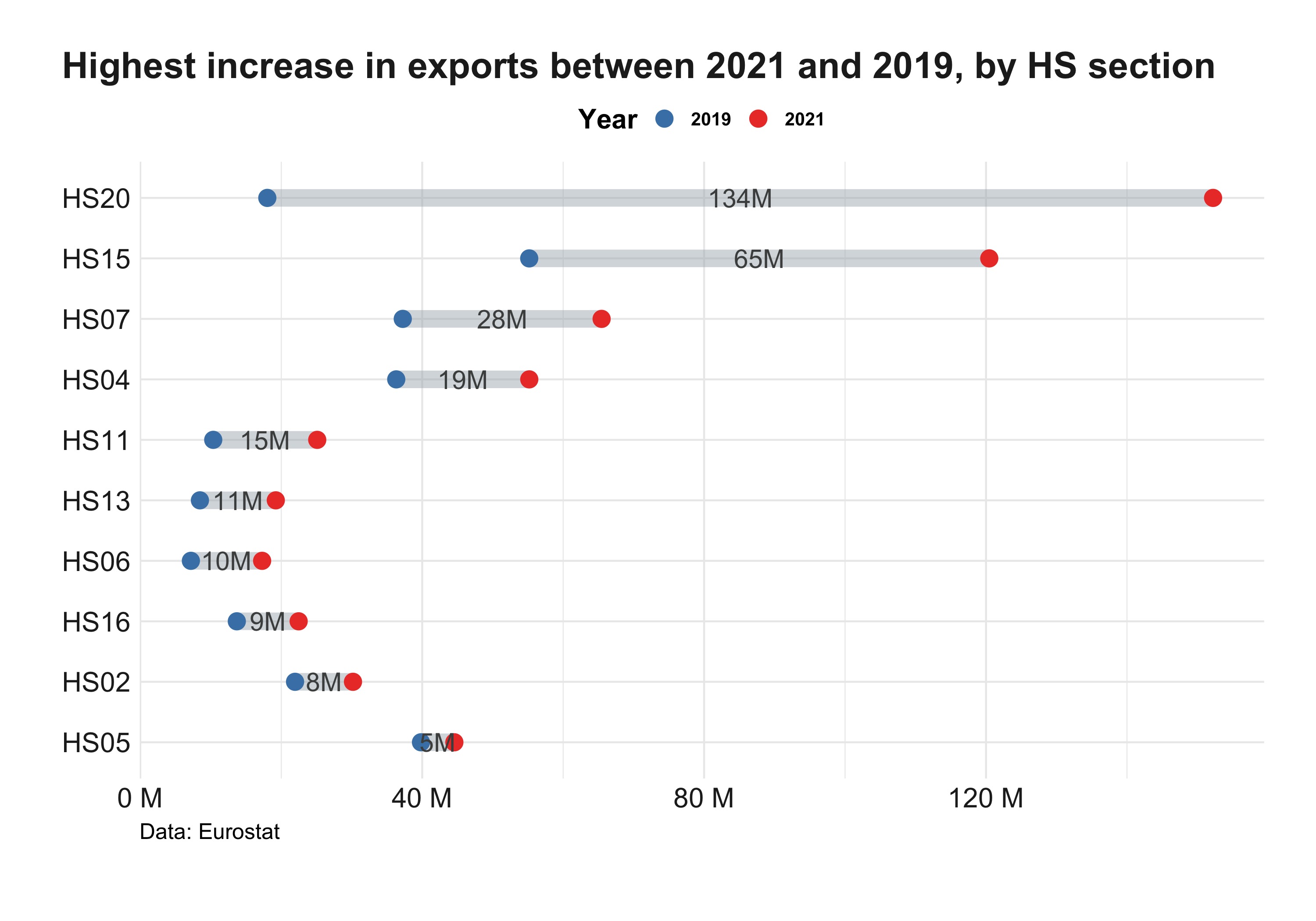
In terms of imports, Kosovo experienced a large increase of €164 million in machinery, appliances and electrical equipment (HS16), with wind-powered generating sets and data-processing equipment taking occupying the largest values (not shown here).
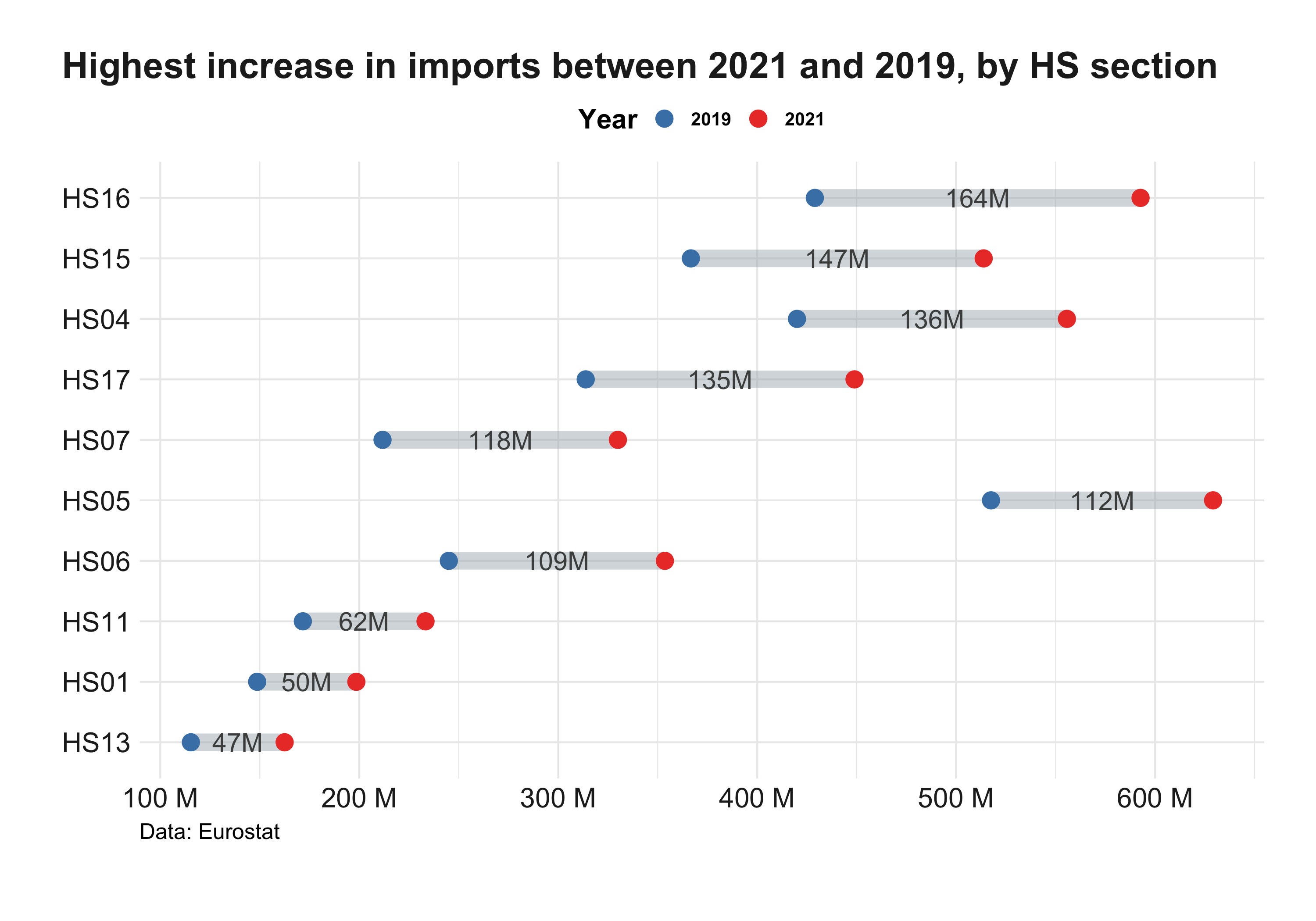
Nevertheless, despite knowing what kinds of goods took the lead in terms of trade value, we cannot necessarily conclude with absolute certainty that Kosovo is trading more in quantity. Being that Kosovo is a net importer, it is generally subjected to global price changes and therefore may suffer as a result of global price instability like we have seen in recent years which can undoubtedly be reflected in the country’s trade volume. More research has to be done while considering inflation as well.
This project was carried out based on monthly trade data for Kosovo collected from the Comext database for trade data managed by Eurostat. The data was combined and cleaned in R Studio. The analysis and visualizations were also produced in R Studio, and the code and other necessary information can be found on my GitHub page.